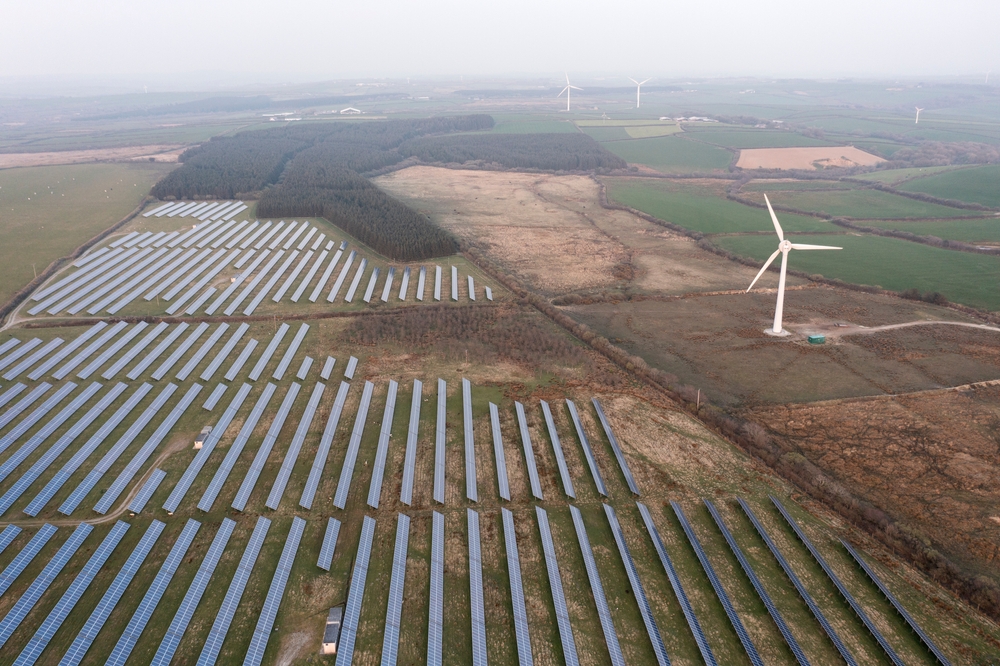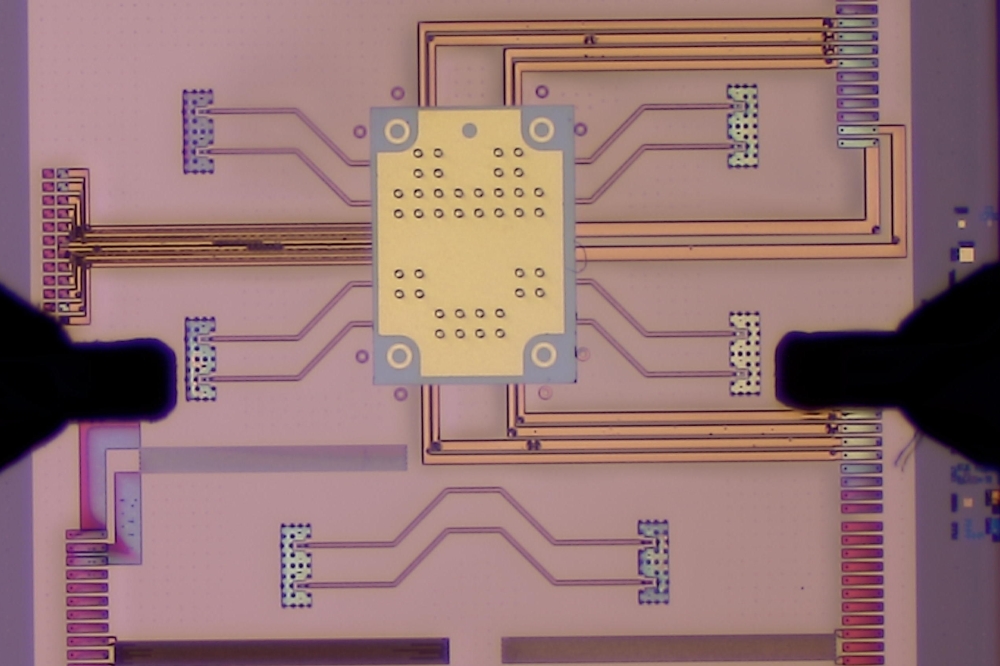Interface abruptness controls telecom laser performance
The major factor controlling the interface abruptness during MOCVD epitaxial growth is the rapid, controlled switching of chemicals at the injector block, in the gas inlet and on the wafer surface. It is critical for MOCVD tool manufacturers to design their systems for effective gas switching. This is especially important for MOCVD tools used to grow InGaAsP/InP lasers, where typically a large quantity of AsH3 is switched, resulting in a change of the flow compositions from the barrier to the well materials.
Controlling the interface The first factor in controlling the interface is the physical switch of precursor chemicals at the injector block. Most commercial MOCVD systems can achieve rapid reactant gas switches using different mechanisms. When large gas volumes are being switched, an additional flow of hydrogen, sometimes referred to as a "phantom flow", is switched in opposition to aid the gas switch and minimize the pressure fluctuation in the injector block. A perfectly tuned switch will exhibit a square wave flow through the remote pressure transducer as precursors are switched from barrier to well compositions, as shown in figure 1. Some MOCVD systems use hydrogen push flow to replace the switched gas volume during switches, which may not result in an abrupt physical gas switch because the density and the viscosity of each gas is different. The physical switch of different precursors in gas phases is much more complicated than a simple volume replacement.
The second important factor in growing high-performance lasers is to maintain the abrupt gas-phase interface during the gas transfer from the injector block to the wafer surface. A well-established flow pattern prevents the hydride and alkyl gas streams from mixing after they are injected into the reaction chamber. A good flow pattern also maintains the abrupt interface of the gas phase as the precursors approach the wafer surface. The mechanism by which good flow patterns are achieved is inherent in the design of vertical rotating disk reactors capable of high rotation speeds, which is well documented (Breiland, Li). If a reactor flow pattern includes recirculation, then the abrupt gas-phase interface will not be maintained. It is therefore crucial to have a well-established laminar flow pattern.
The final and most important factor in creating abrupt interfaces is the reaction in the gas-solid boundary layer, near the wafer surface. The momentum boundary layer in a vertical rotating disk reactor is defined as the point where the gas velocity transitions from axial velocity to radial and tangential velocities. The boundary-layer thickness is defined as the distance between the boundary layer and the wafer surface. Each precursor has a unique viscosity, thermal conductivity and bonding energy, and so the boundary-layer thickness for each precursor is different. The key to growing abrupt interfaces in the solid phase is for all reactant species transported across the boundary layer to arrive at the surface of the wafer simultaneously. In this way, the abrupt gas-phase interface will be incorporated as an abrupt solid-phase interface. The boundary-layer thickness of a rotating disk reactor can be changed by altering the growth conditions, as shown in figure 2.
The effect of boundary-layer thickness A number of long-wavelength InGaAsP/InP laser structures were grown to evaluate the relationship between boundary-layer thickness and photoluminescence (PL) intensity. The active regions were composed of 15 strain-compensated quantum wells (Λ = 1.55 µm for the wells, Λ = 1.1 µm for the barriers) and the target wavelength of the final MQW structure was 1550 nm. The material composition was In0.82Ga0.18As0.70P0.30 for the wells and In0.75Ga0.25As0.39P0.61 for the barriers, making this a challenging structure to grow because of the large change in AsH3 flow when switching between wells and barriers.
Structures were grown using an Emcore Discovery LDM reactor equipped with an emissivity-corrected pyrometry control system, which is referred to as RealTemp (Ramer, Hoffman). Standard MOCVD precursors of trimethylgallium, trimethylindium, arsine and phosphine were used and the growth temperature, measured at the wafer surface by RealTemp, was 650 °C. Prior to each growth, the physical switch of the hydride precursors was optimized. The interface abruptness was evaluated by the measured full width at half maximum (FWHM) of the PL peak at 77 K. The growth conditions shown in table 1 were designed to achieve a different momentum boundary-layer thickness (Breiland). The hydrogen shroud flow was also adjusted to match the pumped gas volume of the rotating disk in order to maintain a laminar flow condition and avoid recirculation and turbulence.
The 77 K PL spectra shown in figure 3 were recorded from 1550 nm laser structures grown under the conditions shown in figure 2. The FWHM of the MQW emission peak decreased as the boundary-layer thickness decreased. The PL spectrum of the MQW grown with the largest boundary layer in this study, figure 3a, showed a shoulder on the right side of the main emission peak. This clearly indicated that the switching of reactants at the boundary layer was poor, resulting in a transition layer of uncontrolled composition at the interface. Reducing the boundary-layer thickness by increasing the growth chamber pressure resulted in a structure having the spectrum shown in figure 3b. Although this eliminated the long-wavelength shoulder, the FWHM of 12.7 meV was still quite large. With a further reduction in momentum boundary-layer thickness, the PL peak became narrower (figures 3c and 3d). Figure 3d was recorded from the structure grown with the smallest momentum boundary-layer thickness of 1.4 cm, and exhibited the narrowest PL FWHM for this structure at 7.5 meV. The peak intensities in figures 3 a-d can not be directly compared to evaluate the quality of the laser, because the spectra were recorded with different neutral density filters, although, in general, the narrower the PL FWHM the brighter the PL intensity.
A second MQW structure with only six wells was grown under similar conditions to those of d in figure 2. This structure demonstrated a FWHM of 6.9 meV at 77 K, as shown in figure 4, which was almost as narrow as the theoretically predicted ideal interface. The energy spreading due to thermal disturbance at 77 K was approximately 6.64 meV. Assuming the thermal energy spreading was the only contributor to the PL FWHM value, the PL FWHM at 0 K for this six-period 1550 nm InGaAsP laser would be about 0.25 meV. To our knowledge, this is the best result ever reported for any type of MQW structure.
Growth interrupts An alternative approach to improving interface abruptness is to employ growth interrupts during gas switching. In this method, the growth is intentionally stopped by diverting the metal alkyl flow from the growth chamber to the vent. The precursor flow compositions are adjusted while flowing hydrides to the growth chamber. Growth resumes when the alkyl flow is switched back into the chamber. While this method could allow the precursor compositions to be switched, it may cause the accumulation of impurities at the interfaces, which can be detrimental to device performance. Also, it may not eliminate the uncontrolled material at the interfaces due to group V exchange at the wafer surface during the growth pause.
Two structures were grown to examine the effect of growth interrupts on MQW quality, using 6 second pauses during the well and barrier switching. One was grown under the same conditions as the MQW shown in figure 3a, which had the largest boundary-layer thickness in this study. The inclusion of a growth interrupt eliminated the shoulder from the 77 K PL spectrum, which had a 15.5 meV FWHM. However, for structures grown under other conditions, the growth interrupt did not provide the narrowest FWHM or the best interface quality. A structure grown under the same conditions as the MQW shown in figure 3d, resulted in a PL spectrum with a FWHM of 11.9 meV (compared with 7.5 meV for figure 3d). It therefore appears that the use of growth interrupts to manufacture abrupt heterostructures is not the best method for producing laser structures, and growth interrupts are not necessary in rotating disk reactors which are properly tuned for optimal switching of the challenging InGaAsP/InP material system.
Summary Interface abruptness control in a vertical rotating disk reactor was demonstrated by the achievement of unprecedented narrow PL FWHM values at 77 K in the InGaAsP quaternary material system, by tuning the gas switching and reducing the momentum boundary-layer thickness. The ability to control the interface abruptness and adjust the boundary-layer thickness to match with the materials system is paramount to the performance of long-wavelength lasers. The vertical rotating disk reactor meets the three basic conditions which are needed for abrupt interface growth control, namely the gas physical switch at the injector block, the well-defined flow pattern that maintains the gas-phase interface abruptness, and the adjustable boundary-layer thickness.































